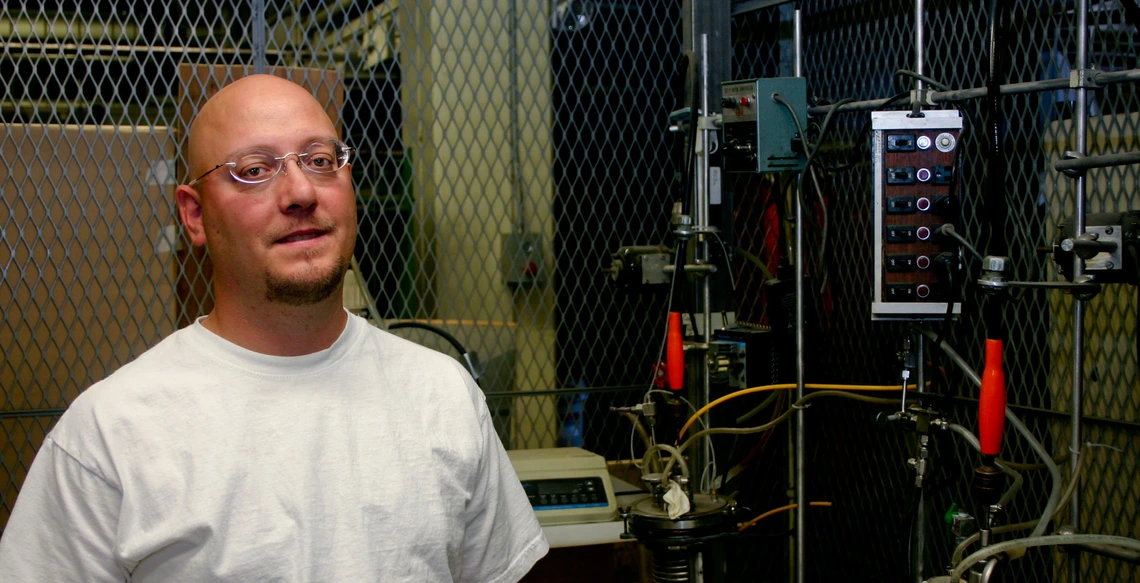Paul Blowers Chosen as 2010 da Vinci Fellow
Pioneer of unorthodox yet highly effective teaching methods recognized for multifaceted contributions.

Paul Blowers
Paul Blowers, associate professor of chemical and environmental engineering, has been named the 2010 da Vinci fellow by the UA College of Engineering. The fellowship is sponsored by the College’s giving society, the da Vinci Circle.
Fellows are selected for their substantial distinguished and sustained contributions to teaching, research and service. A new fellow is named each year, and each fellowship runs for two years. Fellows receive $10,000 during the two-year span of the appointment.
Blowers is an alumnus of the University of Illinois at Urbana-Champaign, where he got his master’s degree in chemical engineering in 1997 and his doctorate in the same in 1999, the year he joined UA. Blowers got his bachelor’s degree in chemical engineering from Michigan State University in 1994. His current research includes using chemical engineering principles to predict the environmental impact and global warming potential of chemicals.
Art Investment
Blowers intends to invest some of the fellowship funding in the art of teaching itself. He already has quite a reputation as an unorthodox teacher, and a stranger walking into his class is likely to be taken aback at the apparent melee, but there are good reasons why his students have nominated him for so many teaching awards.
In his classes, students can be found interacting in small groups, brainstorming vigorously, debating loudly and launching quickfire ideas at each other. Blowers, meanwhile, plays the room acting as arbiter and agent provocateur while suggesting alternative avenues of analysis or sources of information.
Blowers is working on capturing this flux of ideas and directions in software that enables his students to revisit the multiple strands of a classroom session and extract the maximum knowledge from them. “I use a PC tablet and some software called One Note, which archives my voice tied with the notes as I write them,” Blowers explained. “Students can open up notes that I've taken during class and click on them, and it starts my voice right at that point so they can relisten to the class.
The archived lessons have helped his class through the flu season. “They also help in discussions because I never know where the discussion's going to go,” Blowers said. “I'm not limited as I would be using PowerPoint. If I find myself opening things on the Web, or opening Excel or Word files, I can embed those in the One Note file.
However, the current software is not perfectly suited to Blowers’ freeform teaching style. “I might use the fellowship funding to invest in some other software that flows a little better and allows better control of how the voice moves through the file,” he said.
Active Engagement
One of Blowers’ major concerns is inclusion – he doesn’t want a single student to miss a single moment or feel excluded from the class. “Students who speak English as a second language are responding really well,” he said. He is equally adamant that students cannot, if they want to learn, sit there and be passive.
To this end, he makes a point of learning his students’ names in as short a time as possible. “It took me six class meetings at the beginning of the semester to learn all 103 names of the students in my class,” Blowers said. “I work at it really hard, and they tend to pay a lot more attention when they know that you know who they are.”
“Students who otherwise might never ask a question forget that they are in a class of a 100 because I know who they are, so they raise their hands. Some say to me after class that that was the first time they ever asked a question.”

